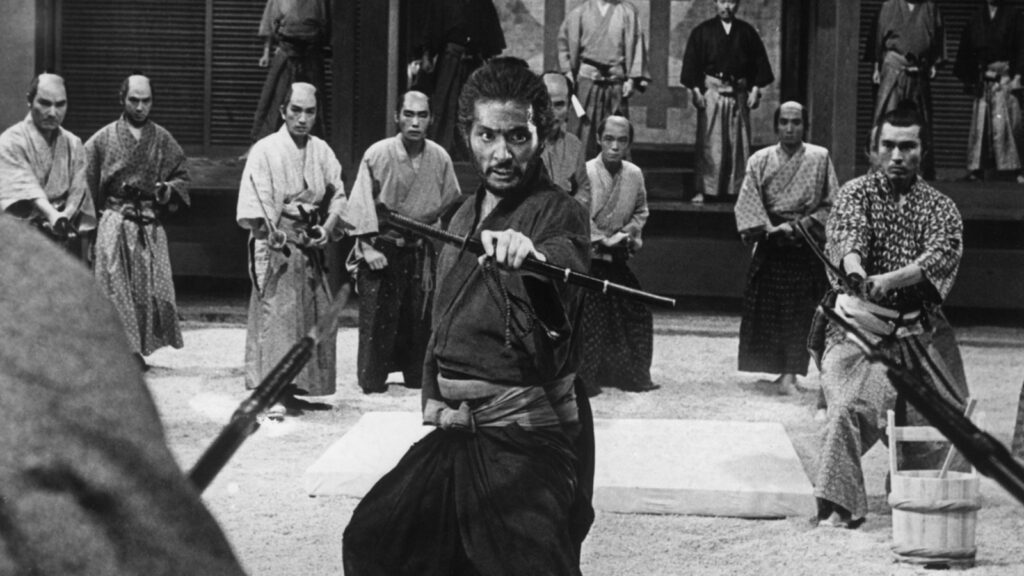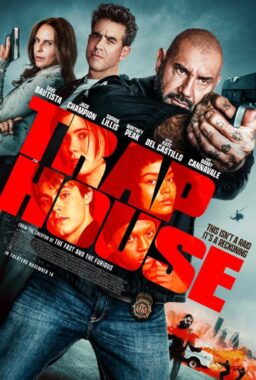Masaki Kobayashi’s “Harakiri” illustrates the samurai code as a flawed system hiding behind a façade of honor and principle—it is undeniably the greatest anti-samurai film ever made. It still hits a nerve over half a century later because it’s the quintessential anti-establishment film; and as long as authoritarian regimes exist around the world, the movie will always be relevant. Of course, it does help that the imagery in Kobayashi’s “Harakiri” is as potent as the message itself.
The 1962 film has many striking shots, but perhaps the most symbolic are in its opening and closing sequences, in which we see a samurai armor clearly displayed with reverence and admiration. It symbolizes the feudal system, but beneath the glorious surface is complete emptiness; the lifeless armor is devoid of anything human.
Political hypocrisy is the idea at the core of Kobayashi’s masterpiece, and even though the film is set in 1630 Japan, its themes are universal. It doesn’t matter who you are, or where you are from—we are all born into a system that influences our thoughts, decisions, and behavior. The individual code of ethics that distinguishes what is morally acceptable or unacceptable behavior is instilled upon us through principles we learn from various sources, be it religious or governmental. We then find ourselves blindly obeying the rules because it is the system implemented at a certain time and place.
Yet, the very foundation of our moral compass can be altered the second we face an ethical dilemma that challenges everything we thought to be right or wrong. This is exactly what happens to the main character of “Harakiri.” A samurai who eventually loses faith in the system after two ethical principles are pitted against each other, the code of the samurai and that of family.
Each time I revisit “Harakiri,” I find myself in awe of Tatsuya Nakadai’s performance as Hanshiro Tsugumo, which rivals even the best work by Toshiro Mifune. When Tsugumo arrives at the estate of the li clan requesting to commit seppuku at the courtyard of their palace, we are immediately hooked by his calm demeanor. His presence is monumental.
Seppuku, or hara-kiri, is an ancient Japanese ritual suicide in which a samurai practices self-disembowelment. It was considered to be the most honorable method of taking one’s own life. The proper method is to plunge a dagger into the stomach, then drag the blade across to the right side, and turn it upwards to ensure a fatal wound. Since the act itself rarely results in instant death, a kaishakunin is appointed to behead the individual after the act is committed to relieve the samurai from the agony.
When the head counselor of the palace hears of Tsugumo’s request, he thinks it’s a bluff. He then shares a tale of another ronin named Chikiwa Motome, who came with the same request a few months prior. To reveal anything more about this would only spoil the experience; spoilers follow for the rest of the film, which is one of those films that the less you know, the better.
Shinobu Hashimoto’s brilliant screenplay goes back and forth in time, and Kobayashi executes the narrative structure with razor sharp precision. There’s not a single moment, line, or shot that feels out of place. The way Kobayashi handles the nonlinear storyline is nothing short of mesmerizing. To sustain this level of intensity with almost no action scenes is truly fascinating.
The plot thickens when the head counselor recalls the story of “the bamboo ronin.” After the three of his most senior samurais suspect that Chikiwa Motome is only here for a few coins, they humiliate him, and force him to commit hara-kiri with his fake bamboo sword. Even compared to today’s standards, this entire sequence is very hard to watch. Motome is initially portrayed as a weak and cowardly samurai with no honor or dignity, but as the story progresses, the truth is slowly revealed, and the viewer begins to see Motome in a new light. Here lies the genius of Hashimoto’s impeccably structured screenplay. It unfolds in a way so that the more insight we get, the more compassion we feel towards the characters. The cowardly samurai is actually a brave family man who risked his own life for their survival.
In the third act, the unbearable tension explodes in eloquent fashion; the samurai with nothing to lose unleashes a barrage of violence, dismemberment, and mayhem upon the li clan. Kobayashi’s cinematographer, Yoshio Miyajima, shoots the fight scenes with grace and elegance. At one point, Miyajima even turns his camera away from the action, and we only hear the cries of men getting disfigured.
One of the most powerful moments in all of cinema is in “Harakiri,” when Hanshiro Tsugumo denounces the code after it ruined his life. I often find myself thinking about what it would take for someone to condemn the very thing they believe in most. When things get personal and one is faced with a personal dilemma that goes against the very core of their belief system, any fanatic devotion to that code collapses instantly.
There are far more important matters in life than any strict code enforced upon the people by any government system or authority. “Harakiri” argues that committing to a code of honor and giving it more value than humanity itself is unforgivable, because even the samurai code, as honorable as it may seem, should never be held with higher regard than something as basic as human decency.
If “Harakiri” had ended with the battle scene at the finale, it would still be a very good film, but it’s the movie’s last moments that elevate it to greatness. Saito, the head counselor, asks about the casualties, and immediately starts to rewrite the narrative. He can’t allow word to get out that a starving ronin took out their best retainers. He demands that Tsugumo’s death be recorded in history as a proper ritual suicide. The cause of death for the other casualties is documented as illness related. Upon hearing the news, the Shogun praises the clan and their samurais for implementing the code of bushido and setting an example with the way they handled the suicide bluffs.
The film’s last shots are that of the samurai armor. It is beautifully displayed once again, as if nothing happened. Any potential threat to the system in place has been eradicate from the history books. The image of that armor will always be seared in my mind as a symbol for all corrupt authoritarian regimes around the world. How many incidents, stories, and people have been erased from collective memory, in order to preserve the image of those in power?
Now playing on the Criterion Channel.











